Watering violets: routine, circuitry and water quality
Let's make a reservation right away - this question fits perfectly into the formula, according to which the number of opinions on it is directly proportional to the number of people, that is, flower growers.
Therefore, our task is only to inform about the basic, so to speak, basic rules on this score, which not only can, but also need to be supplemented and modified by the method of those very "trial and error", since the violet is exactly the plant that is in this part its agriculture has a fertile field for experimentation.
Content:
Watering routine for violets
The first and generally accepted rule is that violets should be "watered" so that the soil in which the plant is grown does not dry out, turning into a hardened lump of earth. In other words, care should be taken to the soil was wet, but in any case you should not arrange a "swamp" in moderation.
Requirements for the water you will water:
- It shouldn't be cold.
- Drink only soft water.
- Before watering, it needs to be defended for half a day.
Never let water get on the leaves.
Violets are characterized by extremely active photosynthesis in daylight conditions, so if it's spring or summer outside, you need to water early in the morning. At other times of the year, at your discretion, watering during the day is also acceptable as at other times of the day.
If only artificial light "smiles" at the plant - forget about this rule, since only systematicity will be important here - choose a convenient watering time for yourself and stick to it regularly.
As for the frequency of watering:
- The temperature regime of the place where the flower grows.
- How it is illuminated (intensity).
- How humid is the air and what are the fluctuations of this humidity in a particular climatic zone.
- The life phase of the violet (during the flowering period, the requirements for watering are, of course, higher), as well as its age.
- How much the root system is highly developed (if the roots "pierced" the entire soil, it is objectively necessary to water more often due to the rapid absorption of moisture from the ground).
- How loose the soil the plant grows is - the denser it is - the less watering will have to be done.
- What is the pot made of (if it is plastic, then the water evaporates more slowly than in clay), in which the violet grows, and how big is it.
The age of violets is of particular importance - young ones need more moisture, so the soil should be moist all the time.
In adults, drying of the upper edge of the soil is also allowed. An important point - violets can tolerate the "water diet", but in the case of "waterlogging" - they die. Experienced growers argue that it is possible to determine the need for watering violets both by the color of the soil ("lightening" it is a sure signal for action) and even by the weight of the pot with the violet itself - everyone will feel the difference in weight if they "practice" several times, "weighing "before and after watering the plant.
About irrigation circuitry
You can supply water to this plant:
- Bottom when in the pallet the pot is poured that volume of waterthat can absorb the soil in which the violet grows. However, you can water the plant in a different way - by placing the pot itself in some container filled with water.
- From above, what needs to be done very carefully - the stream of water must be directed at the very structure of the pot, and it itself should not be "in full swing" (only a thin trickle is appropriate), since it is impossible to prevent soil erosion, as well as splashing on the leaves of the flower, as well as accumulation of puddles around the plant. For these purposes, you need a special "toolkit" - a small watering can with an elongated spout or a large syringe is suitable. The fact that there is enough water - you will see as soon as it appears in the pan of the pot.
The latter option, although more troublesome, is preferred by most flower growers, since in this way harmful salts are washed out of the soil, while in the first case they, on the contrary, float to the plant, which becomes destructive for the violet. In either case, you should not let the water stay in the pan for more than 20 minutes, since this can rot the root system of the violet - therefore, draining the water will also be your responsibility when watering the violets. Using such an irrigation system that is called "wick".
It consists in the fact that the florist attaches a "wick" to a pot with a violet.
It can be an ordinary cord or a cloth strip, so that one end of such a "wick" is in any container with water (an ordinary glass is suitable), and the other in drainage potthat is put on the water tank. Due to the capillary effect, the water is lifted into the pot with the plant.
"Wick" watering has some limitations:
- There are varieties of violets that "react" badly to it.
- It will pull maintenance of violets in a pot with a diameter of no more than 10 centimeters, as the larger plant needs more water.
- In the cold season, the water may be too low for a violet.
In the event that you want to remove dust from the leaves, this should be done in such a way as to exclude the ingress of water into the ground.
About what water should be for violets
If the soil in your pot has a white bloom, it means that there are so many calcium salts in the water that the root system of the plant cannot get the substances necessary for the plant from the ground, which provide him with food.
In this case, proceed as follows:
- Boil the water - this will remove the bulk of the salts (precipitate).
- Oxidize the water with vinegar or citric acid (in the first case, a teaspoon is enough for a liter of water, in the second - 5 grains for the same amount) and pour the pot once a month.
- Always stand the water for at least 12 hours in order to weather the chlorine and precipitate lime.
- Running water (no matter - tap or from a well), pass through household purifiers.
- Use room temperature water, because cold water can be fatal for violets.
Compliance with these water requirements will allow the plant to delight you, rather than force you to take steps to dispose of it.
Properly care for the violet impossible if you do not adhere to proper watering. If you want the plant to "bloom and smell" - try a little!
More information can be found in the video.



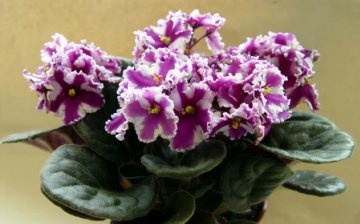
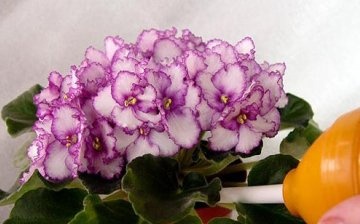
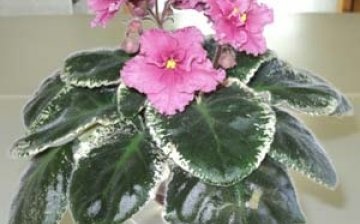
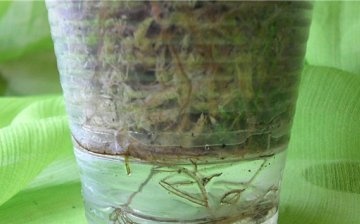




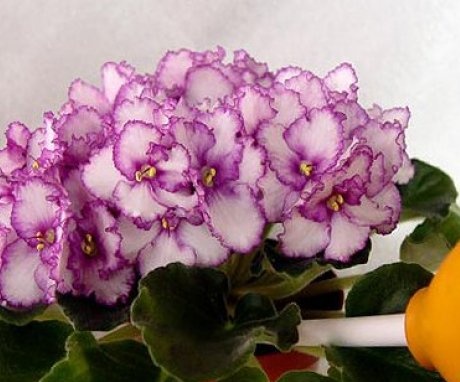
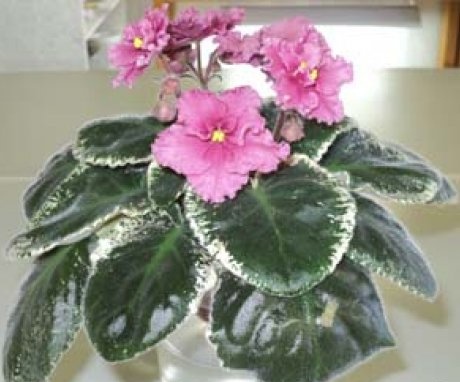

Everything is clear about watering violets, based on the article, I am interested in another question, in what place is it better to grow violets so that they bloom often, on the sunny side, or is it better so that there is no direct sunlight? I look forward to your answers. Thank you in advance.
Most often, I water the violets and, in general, all the flowers at home with boiled, pre-prepared water, but especially so that it does not help against white bloom, sometimes I boil water 2 times in the hope of improving the quality.